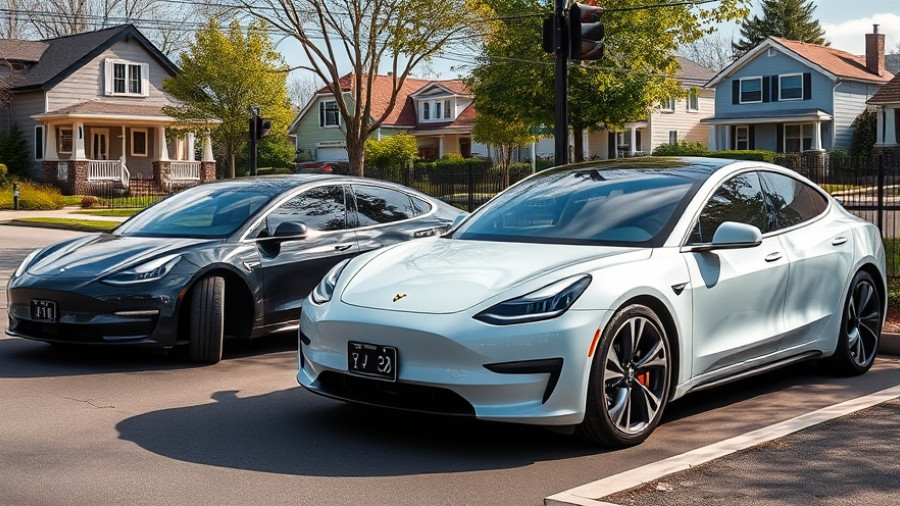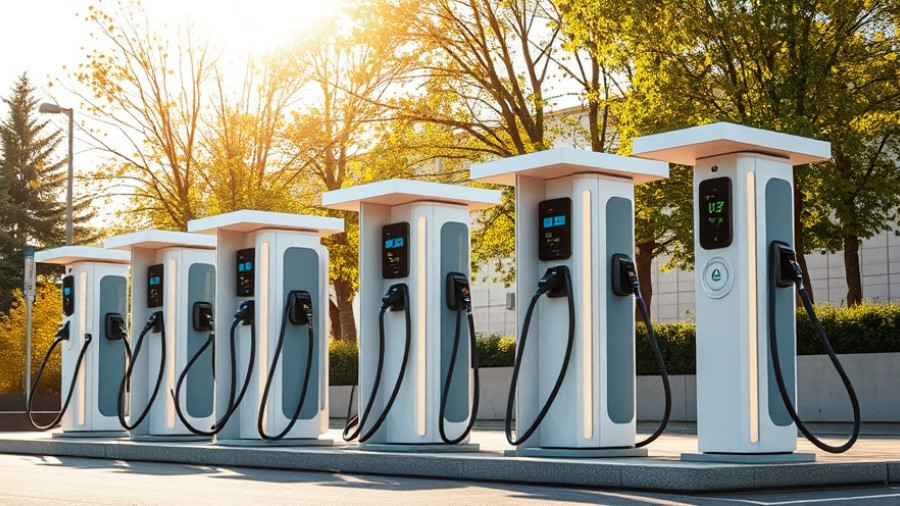
The Future of EV Charging: Sungrow's IDC480E-C Unveiled
At the renowned Power2Drive exhibition held in Munich, Sungrow Charging has showcased its latest innovation in electric vehicle (EV) infrastructure—the IDC480E-C, a compact fast charging station that promises to revolutionize the market. With a focus on efficiency and scalability, this new system embodies the company’s commitment to sustainability and meeting the rising demands of the EV sector.
Unpacking the IDC480E-C: A Closer Look at Specifications
The heart of the IDC480E-C is its powerful 40 kW module, which boasts an efficiency exceeding 97%. This impressive specification not only enhances the charging experience but also reduces energy waste, aligning with global sustainability goals. Sungrow's modular architecture allows for configurations ranging all the way up to 480 kW, catering to diverse customer needs. Whether for logistics firms or public charging operators, the IDC480E-C presents a flexible option that promises high performance and adaptability.
What Sets Sungrow Apart? Reliability and Longevity
One of the standout features of the IDC480E-C is its anticipated lifespan of over a decade. This longevity is due to several technological advancements, including IP65 protection and C5 anti-corrosion capabilities. Furthermore, the insulated air-cooling system ensures that the charging station remains efficient even under heavy use. As electric vehicles become central to our transportation systems, robustness in infrastructure will be critical, and Sungrow’s innovations address these needs comprehensively.
The Modular Advantage: Customization for Users
Notably, the IDC480E-C’s modular design allows users to select various dispenser configurations tailored to their unique requirements. With options that include multiple connectors and advanced cooling technologies, businesses can optimize their charging stations for the highest throughput, thereby enhancing customer satisfaction and efficiency. Such adaptability is invaluable in fast-paced environments where EV uptake is accelerating.
Catalyzing the Growth of Electric Infrastructure
Robert von Wahl, Director of EV Charging Europe at Sungrow, encapsulates the essence of the IDC480E-C: "This represents a significant milestone in our journey towards a greener and interconnected future." Emerging technologies like this charging station symbolize the shift toward clean energy and a sustainable future in transportation. High-efficiency charging stations like the IDC480E-C will be vital in building the charging infrastructure that will keep pace with the rapid adoption of EVs across Europe.
Practical Considerations for Homeowners and Businesses
For homeowners and businesses keen on integrating solar and electric solutions, the launch of the IDC480E-C is a notable development. Investing in such innovations not only supports the growing trend of sustainability but also aligns with potential government incentives geared toward promoting green energy solutions. By incorporating state-of-the-art charging technology, both residential and commercial users can enhance their energy independence while also contributing positively to environmental goals.
In conclusion, the introduction of Sungrow's IDC480E-C fast charging station is a forward-thinking step toward a sustainable future. Its efficiency, flexibility, and reliability make it a prime candidate for both commercial and residential applications, highlighting the importance of advanced infrastructure in the transition to green energy.
Are you ready to embrace this change and explore the benefits of incorporating cutting-edge EV charging solutions? The time to consider sustainable energy options is now, as the world shifts toward more environmentally-friendly practices.
 Add Row
Add Row  Add
Add 



Write A Comment